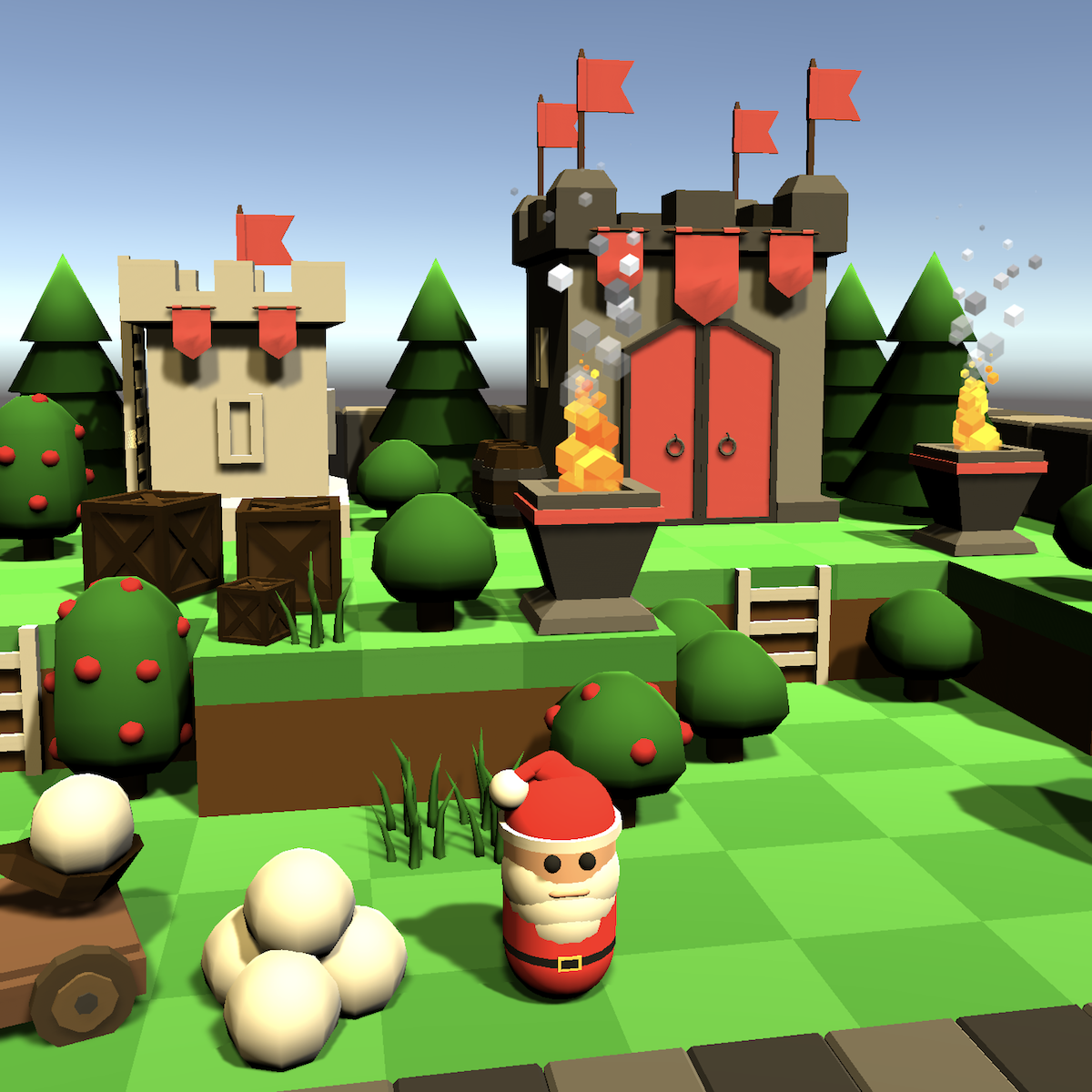Back to Courses









Software Development Courses - Page 40
Showing results 391-400 of 1266

React - State management in functional components (HOOKS)
By the end of this course you will have a solid grasp of state management fundamentals in React applications using the useState utility in functional components. We will start by focusing on the core concepts of state management reinforced by code examples which start off simple to drill the concepts and nuances of this pattern. We then take a deeper dive into understanding the asynchronous nature of the setState() method, and how we can work with this to achieve what we want to from our development processes.
This course is aimed at developers who are familiar with React and state management in general, understand the basics well, and would like to have some more experience, especially using some of the more advanced and dynamic development patterns in React.

LCFA Practice Course
This course aims to prepare you for working as an information technology professional. In this course, we will be drill into the domains on the Linux Foundations Certified IT Associate exam.

Developing FPGA-accelerated cloud applications with SDAccel: Theory
This course is for anyone passionate in learning how to develop FPGA-accelerated applications with SDAccel!
We are entering in an era in which technology progress induces paradigm shifts in computing!
As a tradeoff between the two extreme characteristics of GPP and ASIC, we can find a new concept, a new idea of computing... the reconfigurable computing, which has combined the advantages of both the previous worlds. Within this context, we can say that reconfigurable computing will widely, pervasively, and gradually impact human lives. Hence, it is time that we focus on how reconfigurable computing and reconfigurable system design techniques are to be utilised for building applications.
One one hand reconfigurable computing can have better performance with respect to a software implementation but paying this in terms of time to implement. On the other hand a reconfigurable device can be used to design a system without requiring the same design time and complexity compared to a full custom solution but being beaten in terms of performance.
Within this context, the Xilinx SDx tools, including the SDAccel environment, the SDSoC environment, and Vivado HLS, provide an out-of-the-box experience for system programmers looking to partition elements of a software application to run in an FPGA-based hardware element, and having that hardware work seamlessly with the rest of the application running in a processor or embedded processor.
The out-of-the-box experience will provide interesting and, let us say, “good enough” results for many applications.
However, this may not be true for you, you may be looking for better performance, data throughput, reduced latency, or to reduce the resources usage... This course is focusing exactly on this. After introducing you to the FPGAs we are going to dig more into the details on how to use Xilinx SDAccel providing you also with working examples on how to optimize the hardware logic to obtain the best of of your hardware implementations. In this case, certain attributes, directives, or pragmas, can be used to direct the compilation and synthesis of the hardware kernel, or to optimise the function of the data mover operating between the processor and the hardware logic.
Furthermore, In this course we are going to focus on distributed, heterogeneous infrastructures, presenting how to bring your solutions to life by using the Amazon EC2 F1 instances.

Simple NEWS Reader Android Application Using okhttp
At the end of this project we will create a simple NEWS reader application. We are going to use okhttp to fetch JSON data from a NEWS API, we are going to parse the data and show them in a recyclerview in Android. During this project we will learn how to make a http request using okhttp library, we are going to learn to how to download an image in android and put it in an imageview using Picasso library. Also we will learn how to work with recyclerview in android.

Machine Learning for Kyphosis Disease Classification
The objective of this project is to predict whether a patient has kyphosis or not, based on given features and diagnostic measurements such as age and number of vertebrae. Kyphosis is an abnormally excessive convex curvature of the spine. This guided project is practical and directly applicable to the healthcare industry. You can add this project to your portfolio of projects which is essential for your next job interview.

C Programming: Modular Programming and Memory Management - 3
Enhance your coding skills along your path to becoming a proficient C programmer with the essential concepts of functions and pointers.
In this course you will be introduced to the concept of modular programming: that is, dividing up more complex tasks into manageable pieces.
You will learn how to write your own functions (just like functions in mathematics for example). You will also gain insight into a computer's architecture and learn how its memory is organized.
Given the vast amount of memory computers have these days, how does your program remember where a certain variable is stored? This brings about the important topic of how memory is efficiently addressed inside a computer, and with it, the topic of pointers.
Pointers are often considered the most difficult part and main struggle for C program developers. We will introduce you to this central topic with our novel and innovative visualization tools and show you precisely how pointers work. No need to struggle! You will receive instant feedback on your code right within your browser.
The programming concepts you will gain in this course are foundational to any programming language. C is a foundational programming language taught at engineering schools around the world, and represents one of the building blocks of modern computer information technology. Invented in the 1970’s. It is still one of the most stable and popular programming languages in the world.
By the end of this course, you will have reached the third mile stone in the C Programming with Linux Specialization program, unlocking the door to a career in computer engineering.
Your job outlook:
- Programmers, developers, engineers, managers, and related industries within scientific computing and data science;
- Embedded systems such as transportation, utility networks, and aerospace;
- Robotics industry and manufacturing;
- IoT (Internet of Things) used in smart homes, automation, and wearables.
- IEEE, the world’s largest technical professional organization for the advancement of technology, ranks C as third of the top programming languages of 2021 in demand by employers. (Source: IEEE Spectrum)
This course has received financial support from the Patrick & Lina Drahi Foundation.

Configuring Python Extension Pack with Visual Studio Code
In this 1.5 hours guided project, you will learn how to install, configure and use the Python extension pack and related extensions in Visual Studio Code. At the end of the class, you will be familiar with the major components of the extension pack. You will also be able to build, debug, customize your development experience, and distribute your configurations to other workstations. Topics include semantic highlighting, auto-complete, Intellisense, debugging, DocString Generator, Python Indent, Jinja, DJango, Environmental Manager, and Python Preview. Basic Python programming experience is highly recommended.

Blockchain Platforms
This fourth course of the Blockchain specialization provides learners with an understanding of the broader blockchain ecosystem. Learners are introduced to other blockchain platforms, details of two decentralized application use cases, and challenges such as privacy and scalability. They are prepared to discuss permissioned blockchain architectures of Hyperledger and Microsoft Azure's blockchain as a service model and analyze the Augur and Grid+ decentralized application platforms. Course material includes emerging alternative decentralization models such as IPFS and Hashgraph, challenges in broader blockchain adoption, and continuous improvement solutions.

Introduction to Embedded Systems Software and Development Environments
Welcome to the Introduction to Embedded Systems Software and Development Environments. This course is focused on giving you real world coding experience and hands on project work with ARM based Microcontrollers. You will learn how to implement software configuration management and develop embedded software applications. Course assignments include creating a build system using the GNU Toolchain GCC, using Git version control, and developing software in Linux on a Virtual Machine. The course concludes with a project where you will create your own build system and firmware that can manipulate memory.
The second course in this 2 course series , Embedded Software and Hardware Architecture, will use hardware tools to program and debug microcontrollers with bare-metal firmware. Using a Texas Instruments MSP432 Development Kit, you will configure a variety of peripherals, write numerous programs, and see your work execute on your own embedded platform!

Create Keyboard Movement Mechanics with C# in Unity
In this two-hour, project-based course, you'll learn how to make your game's character move, jump, sneak and run using different keys on your keyboard. You'll also learn how to set up the camera to have it follow your character when it moves around your game's environment, and enable it to zoom in and out for better player experience.
Popular Internships and Jobs by Categories
Browse
© 2024 BoostGrad | All rights reserved


